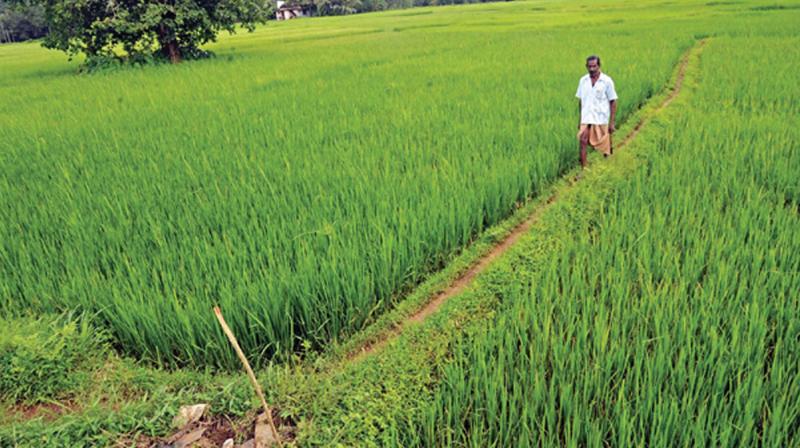Lessons from the field
Though a lot has been written about direct income support schemes for farmers, little is known about their actual outcomes.

With the launch of direct income support schemes namely Rythu Bandhu (RB), Krushak Assistance for Livelihood and Income Augmentation (KALIA) and Pradhan Mantri Kisan Samman Nidhi (PM-KISAN) there has been a healthy debate on the need for assured income support for farmers in India. Though a lot has been written about such schemes, little is known about their actual outcomes. To understand the ground realities, we visited Mandapally village in Siddipet district of Telangana and interacted with the farmers on various aspects of RB scheme. The RB is the first income support scheme introduced in India in the state of Telangana in May 2018. It is aimed at providing investment support to farmers at the rate of Rs. 8,000 per acre of land owned every year for purchasing agricultural inputs and meeting other investment needs during the crop season. The findings from our interaction are revealing and offer important policy lessons for strengthening the design of farm income support programmes.
High Awareness
Most of the farmers were aware of the purpose for which cash support was provided under RB scheme. This was the outcome of the awareness campaign conducted by the government. Agriculture officers and the Anganwadi workers were roped in to spread awareness about the scheme. Through the campaign, the beneficiaries were informed about their entitlement, purpose of cash transfer and the procedure involved in receiving the cash. Also, the government launched an initiative to update the land passbooks, which contain the details of land owned by each farmer. All these suggest that necessary preparatory steps would help hassle-free roll out of cash support scheme.
Use and adequacy
Sixty percent of the farmers reported that they used the cash for purchasing agricultural inputs. The remaining used it for non-agricultural purposes. This shows that chances of misuse of cash in cash support schemes are real and hence needs to be tackled through appropriate policy actions. Many farmers felt that the amount of cash received was insufficient. None of the farmers realised a notable increase in their income levels post-RB scheme. Most popular crop in Mandapally was paddy and 86 percent of the land holdings were small and marginal. A farmer incurs around Rs 10,000 to Rs 15,000 per acre for growing, harvesting and selling paddy. Hence an amount of Rs 4000 might cover about just 25-40 percent of the expenditure. Also, the farmers observed that the increase in the prices of fertilisers in recent times and the rising cost of labour had reduced the real value of the cash received through RB. The best way to get around this problem is the indexation of cash paid to inflation or price indices.
Tenant farmers
Nowadays a large number of farmers in Telangana lease out their land to a tenant farmer. There was a high incidence of this practice in Mandapally. In such cases, the actual cultivators namely the tenant farmers are not receiving cash under RB scheme as they are not the land owners. As a consequence, the land-owner farmers who lease out their land are earning income through two channels: lease amount received from tenants and RB scheme.
This is a serious concern as the primary objective of the RB scheme is to provide cash support to cultivators to purchase agricultural inputs. As more and more people are now engaged in cultivating using leased land, it would make greater sense to provide cash support to only those who work/cultivate on the land rather than those who lease out their land. Alternatively, a limit could be imposed on the size of landholdings for availing the benefit as in the case of PM-KISAN and KALIA schemes. However, the farmers we interviewed did not appreciate the idea of imposing such conditions in cash transfer.
Payment method and delay
The first instalment of cash was distributed using cheque, and in the second time, the money was directly transferred to the savings bank accounts of the farmers. It is expected that the subsequent payments would be credited directly to the bank accounts. But most farmers were happy with receiving cheques. The encashment was easy, and they felt that there was little chance of diverting the funds. In case of direct transfer to the bank accounts, the farmers fear their relatives/children would try to transfer the money to their accounts! If it is in the form of a cheque, they felt the cash would directly come to their hand. This position is contrary to the established view that direct credit transfer to the bank account of beneficiaries is the best way to avoid leakage in government welfare spending.
Farmers usually approach the informal money lenders for cash at the beginning of crop season. The two times farmers received RB amount was when the crop season was half way through or about to end. As a result, the farmers’ dependence on money lenders for meeting their agricultural needs did not reduce. This suggests that cash transfers should be made at the beginning of the crop season.
Exclusion error
We found a major source of exclusion error. For farmers to obtain the RB money, they would need to have their land records updated in the local agricultural office. Although farmers are increasingly getting their land records updated, there is still a significant portion of farmers whose registration of complete land is pending. The official machinery has been slow in responding to the demand for updating land records. Further, a farmer cannot benefit when the land is under legal dispute. Hence efforts should be made to complete registration of landholdings to the rightful owners to eliminate exclusion error.
(The authors are Associate Professor of Economics and Doctoral Student in Economics respectively at Indian Institute of Management Kozhikode.)

